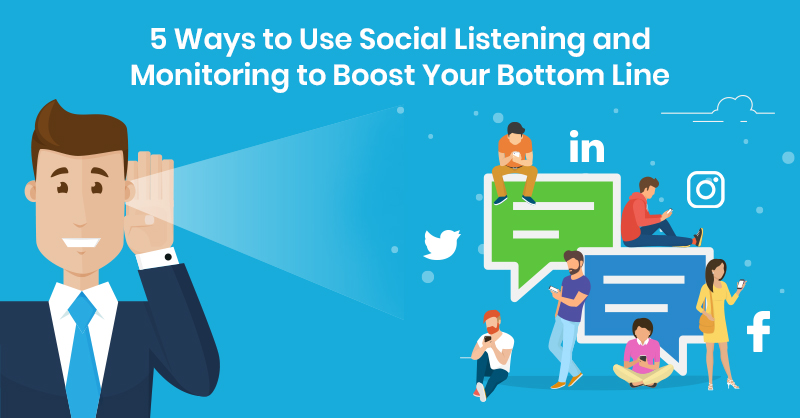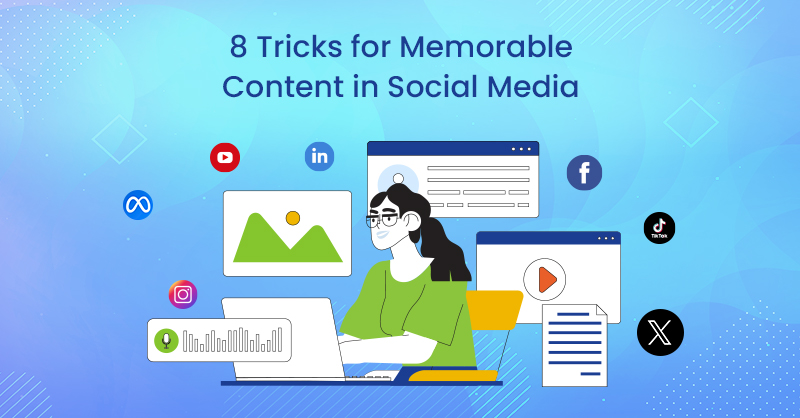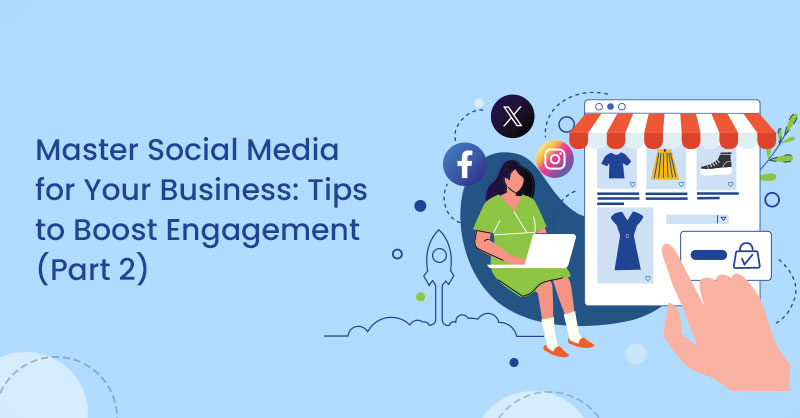Small and large business owners need new ways to increase income, sales, leads, and everything in between. This is why marketers need to be inventive and continuously come up with new ideas and strategies.
Social media platforms are an invaluable tool in today's marketing and advertising, even more so if one considers how it can influence buying behaviour and use some of the oldest tricks in the book.
So, you've got all types of brands and businesses dealing with social media management on social media platforms. And these pages can influence buyer behaviour to the point that the lack of a Facebook and/or Instagram and LinkedIn page creates suspicion as to the brand itself.
Social media platforms are pretty much the leading distributors of ads and information in the modern age. But they're also a great gatherer of data, thus helping marketers better understand their crowd.
By extension, social media platforms help marketers and brands sell better and more relevant products to their followers by having a more personal feel when interacting with their audience.
Using social media monitoring and social listening to your brand's advantage boosts those interactions and, down the line, drives sales and helps you get a better, healthier bottom line.
Social Media Monitoring vs. Social Listening
There are various tactics and strategies when it comes to social media. But let me give some definitions and info first.
Social Media Monitoring: A Definition
Social media monitoring may sound like some difficult concept only awesome marketers know, but it's a way of using tools to prevent or avoid a considerable PR crisis, amongst other things.
In its very essence, social media monitoring is the act of using digital PR tools, social media tools, everything in your disposal to find and monitor references that contain your brand's name on social media. Successful social media monitoring equals a healthy brand image.
Why Do You Need Social Media Monitoring and How Can It Benefit You?
It's 2020, and everything has gone global. SaaS companies from Australia have European customers and eCommerce businesses from Asia calculate the MRR churn of customers half-way across the world.
You may get a negative reference that will taint the brand image you've created, and that negative reference could be from a competitor headquartered on a different continent.
Using social media monitoring tools, you can control all mentions, good or bad, before catching on and doing any actual damage.
Of course, all these mentions that I just brought up are full of something valuable: Data. And this is the second main reason you need social media monitoring.
Social media monitoring tools can help you prevent, but they'll also help you gather data. Big data analytics tools, on the other hand, will help you analyze and utilize your findings and create memorable, relatable content. But I'll get into that in a minute.
Definition of Social Listening
If social media monitoring tells you what goes on regarding your brand, social listening will give you insight into why social media has those mentions of your brand and what you can do about it.
More specifically, social listening is what happens after you complete social media monitoring. Through social listening, you can analyze what goes in your niche and use that data to your advantage.
Difference From Social Media Monitoring
One could say that social media monitoring is the brain and social listening is the heart of this integral part of your social media strategy.
Through social media monitoring, you can check, gather data, create a strategy for social media and other sales channels like your online store, and get valuable insight into (re)designing your brand's image. This is the brain - the analytical part.
The heart is the one that interacts after having taken all the data and information into account.
So, the key difference between social media monitoring and social listening is the actions taken. When monitoring, you observe and gather data, you see the number of times your name has come up, and you count impressions, mentions, and engagement.
When listening, you use data to your advantage. Simple as that. You act on the reason why you were mentioned. You understand why a prospect interacted with your brand or the core of your niche the way they did. And in the and, you use that understanding to your advantage.
Why Do You Need Social Listening and How Can It Benefit You?
Your brand works in the same way a living, breathing entity does, which means that it exists, and it needs to feed and grow somehow.
Your brand is as real as your prospects, and its "food" is people talking about it and trusting its authority. You need to know what kind of "food" your brand is getting. This is why you need social listening.
Great social listening means one thing first and foremost: Great levels of engagement. Engagement can lead to pretty much anything since you take the time and effort to respond to your prospects and, as a result, create the image of a human-to-human brand.
Social listening can also help you, content-wise. Your social media monitoring data will be the ones to show you how to write content your prospects love and how to avoid content for which they couldn't care less.
How Can Those Two Practices Work Combined?
The first thing you need to remember when it comes to social media monitoring and social listening would be the following: You need both to create a successful social media strategy.
So, let's see how you can leverage social media monitoring and social listening and, most importantly, why:
- Using tools that help you with social media monitoring and social listening can also help you measure growth quickly and easily. Track mentions of your brand and mentions of competitors, and utilize the data to your advantage.
- The data from social media monitoring will increase CLTV (Customer Lifetime Value), among other things. By taking action and engaging in social listening afterward, you can create posts that will be spot-on and will get tonnes of attention and, in the end, engagement.
The whole point here is to use data to bring forth your authoritative side and help you look like you're the all-in-one go-to person. This is one of the things that will make prospects come to you, and repeaters remain loyal.
- Listening to your audience's needs makes it much easier for you to come up with new ideas. An explainer video, for example, might be a great idea but not something the crowd you're trying to attract at this point would like.
Social media monitoring and social listening can help you develop content that will be engaging enough, useful product updates, reasonable offers, and various other goodies. These are things that your prospects would love to see and experience before becoming customers.
Therefore, social media monitoring and social listening are the two main things that will help you determine your overall social media strategy. Especially when it comes down to metrics, content creation for all marketing purposes, even the hows and whys of customer acquisition and the increase of their CLTV.
Because at the end of the day, we're talking about your bottom line. And your bottom line doesn't consist of one-timers, prospects, or lead generation.
Your bottom line is your repeaters, the customers that belong to your loyalty program and that will always be happy to refer a friend. So, when most marketers think that social media equals brand awareness, and that's about it, how are you going to prove them wrong?
How Can Social Listening and Social Media Monitoring Boost the Bottom Line?
First, I'd like you to keep one fundamental rule in mind: You can't do anything - literally, anything - if you don't have a thing or two straightened out.
You need to be sure of your goals, ideal prospects, and how to combine the two. So, let's see…
The Basics
First, in order of business would be to sit down and determine what kind of goals you'd like to reach, how much time you've got to get them, and what part of your audience would be there to help you out with that.
So, since we're talking about the bottom line, aka about your already existing clientele's net worth after deducting taxes and losses, you need to sit down and think about how you can modify your tone of voice.
Your brand's tone might be one and established. Still, different things and expressions will appeal to another part of your audience. Pinpoint who you'd like to target first and then begin monitoring your competitors' references on social media, as well as your own.
Offer something that will make a difference.
Take, for example, Elon Musk's Tweet:

(Source)
He used social media monitoring and social listening to locate and identify a problem of an already existing customer, out of whom he'd had profit in the past, and resolved a significant issue.
Optimize and Share
In other words, create content that will be shareable across platforms and optimize it to appeal to all members of your audience.
Another reason you need optimized content is to enable your customers to share it through any device. Mobile-optimized content saves your customers time and effort, and it appeals to the spontaneous nature of making a purchase.
Use social media monitoring to track a need. Let's say it's a discount code, for example. Create an email newsletter that will be shareable. Email marketing platforms and pre-made email marketing templates will help you with creating fancy and beautiful, responsive, and shareable email newsletters.
Ask your already existing customers to share it with their contacts and lead those contacts to an optimized landing page through your CTA button, where they'll be able to sign up for your newsletter.
That way, you'll generate leads for your business, and you'll increase your bottom line by having more of your already existing customers utilize the offer. More of the people they shared it with will become loyal customers.
A Customer-Centric Approach
Today's business model has shifted, as we all know, and it's gone from B2B or B2C to H2H, aka Human To Human.
So, when you're engaging in social listening and when you're trying to make an effort to create something through that and your social media monitoring tools, make sure to lose the classic - and somewhat annoying - "I'm so sorry" approach.
Through social media, you can reply to your customers in a more personal, precise way that will be of use to them.
Not to mention creating the image of a brand that cares and won't give out canned responses to problems and requests.
A customer-centric approach has got yet another benefit, though: By engaging in an open dialogue with your customers, you get heaps and bounds of valuable feedback.
Customer feedback can help you improve your product, your services, create tailor-made offers, and, in the end, will give you a ton of data.
Another big yes yes of social media monitoring and social listening is that a brand that listens is a brand that cares. And your prospects and customers will be more than willing to buy from you if you decide to do that.
Communication is of paramount importance if we're talking about a brand that needs a more customer-centric approach and uses social media monitoring and social listening tools to do that. That way, you can make a huge impact.
Not to mention that by monitoring, you can prevent an upcoming crisis-pr or otherwise-like Elon Musk did in that tweet above.
Utilize Data
The data I mentioned above can help you increase sales. Let me explain how: Imagine using a powerful platform where you can enter that data and use AI and machine learning to come up with personalized goodies.
As a customer, wouldn't you want that? I bet the answer is yes.
Your data and the right platform can help you segment one-on-one and create spot-on buyer personas and hyper-personalized experiences for your prospects. And this will lead to improved sales, of course. Who doesn’t want something custom and tailor-made? Well, sort of.
And don't get me started on those ads… The data you're going to gather will prove to be a real goldmine for that one!
Social Media Platforms Are Your Stage
Your competitors have their strategy. You can see what they do and do it better. If, for example, you see that there are complaints about canned responses, don't do that yourself.
If existing customers need a discount or two, and your competitors are unwilling to give out some, go ahead and do it yourself. Give a discount.
If your brand has a little bolder attitude than that, go ahead and do it like Wendy's. The brand uses its Twitter platform to rant at competitors - and, sometimes, people who cross "Wendy" -, throw shade and, in the end, have more people state where their loyalties lie and engage with the two brands.
That way, you can also get social media influencers that could be fans of your brand to engage with you. Monitor their references separately and make sure to act accordingly when they happen to mention you.
That way, you'll get them on board with your brand and get great engagement more efficiently.
The Metrics You Should Be Aware Of
The first and what seems to be the holy grail of marketing metrics regarding everything, including social media, is your engagement.
Engagement rates are among the most critical metrics. The number of replies you receive, the number of shares and likes your post will get, and the number of mentions contribute to your message going viral.
Another metric you should keep in mind would be the overall lead generation and engagement, both per channel and across channels.
By keeping track of that metric, you're essentially managing your audience and the content that made this audience engage. This will help you keep your priorities straight when it comes down to content.
You also need to track one other, essential little thing: The metrics of your competitors. As stressful as it may sound, you need to compare yourself to others - in that case, your brand to that of your competitors.
Posts, content, social media messages, engagement, everything needs to be right there where you can track it. Brand mentions, types of posts that engage, the overall buzz a competitor makes will help you create your content.
Finally, you'll need to check the volume of conversation happening around your organization. How many mentions did your brand or niche receive across platforms? How can you increase that? What kind of campaigns can boost your engagement rates?
The Takeaway
Social media monitoring and social listening are not here to make your brand known. Social media platforms can help you give your audience content that will be as personalized as needed to lead them further down the sales funnel.
Knowing what's being said around the web about your brand will help you plan your actions accordingly.
And in the end, knowing how to respond to comments about your brand will allow you to create and execute a plan that will increase your bottom line. That way, more existing customers will purchase more things, thus increasing their CLTV and helping you establish authority.






